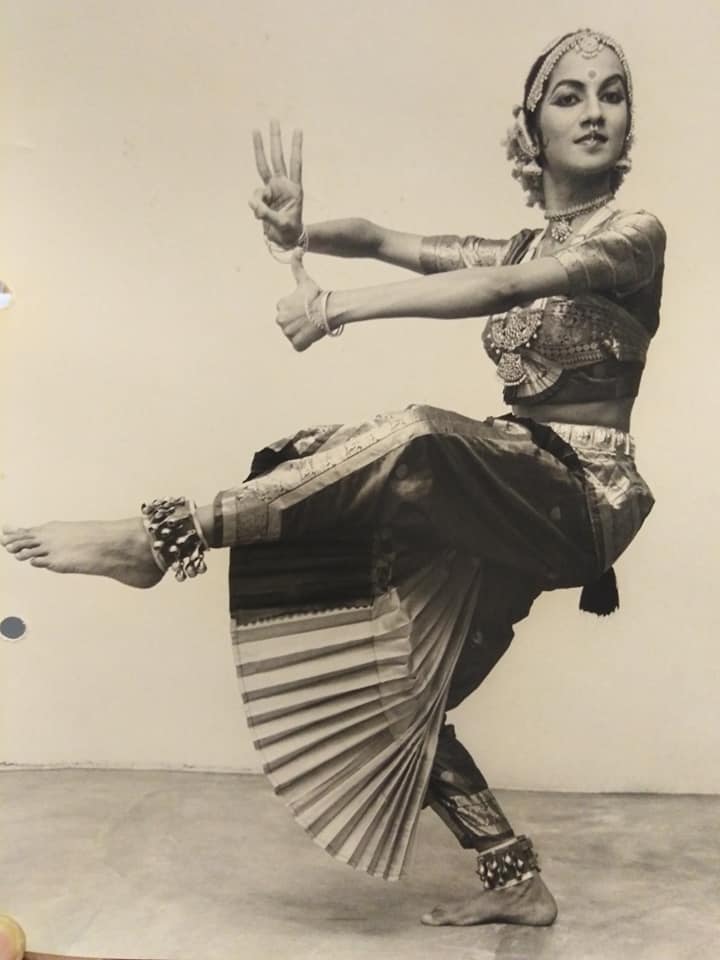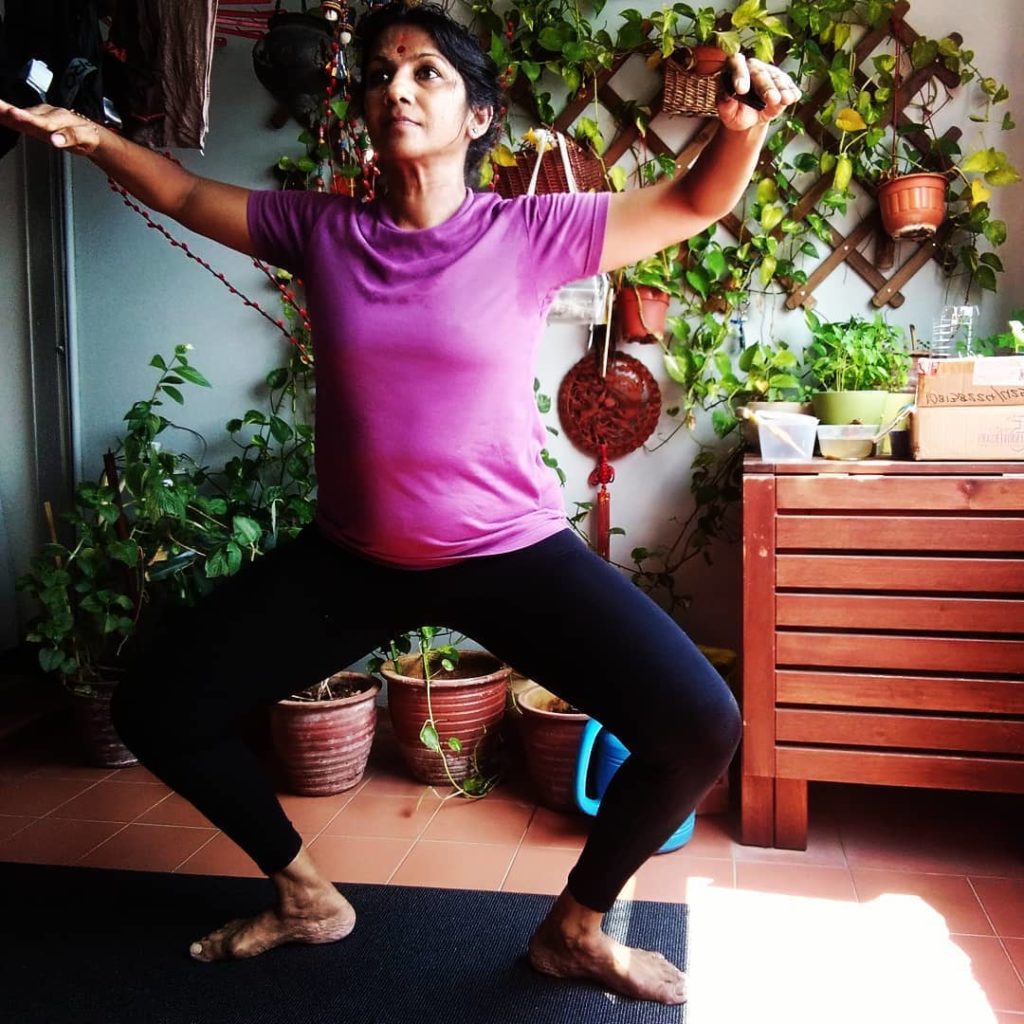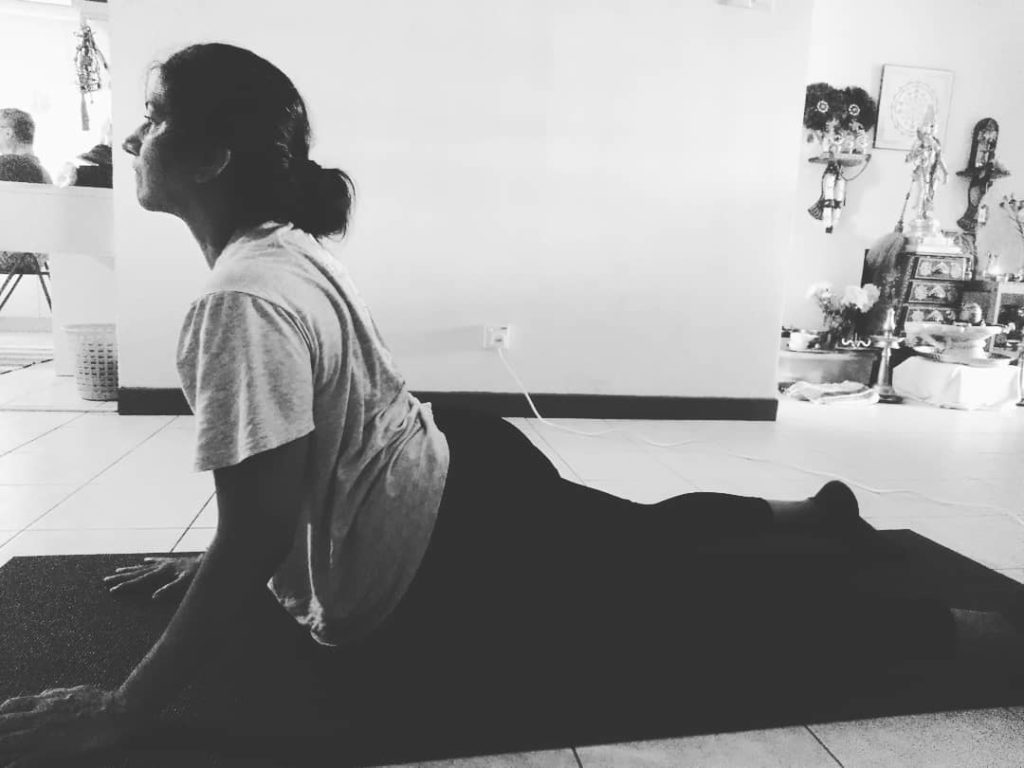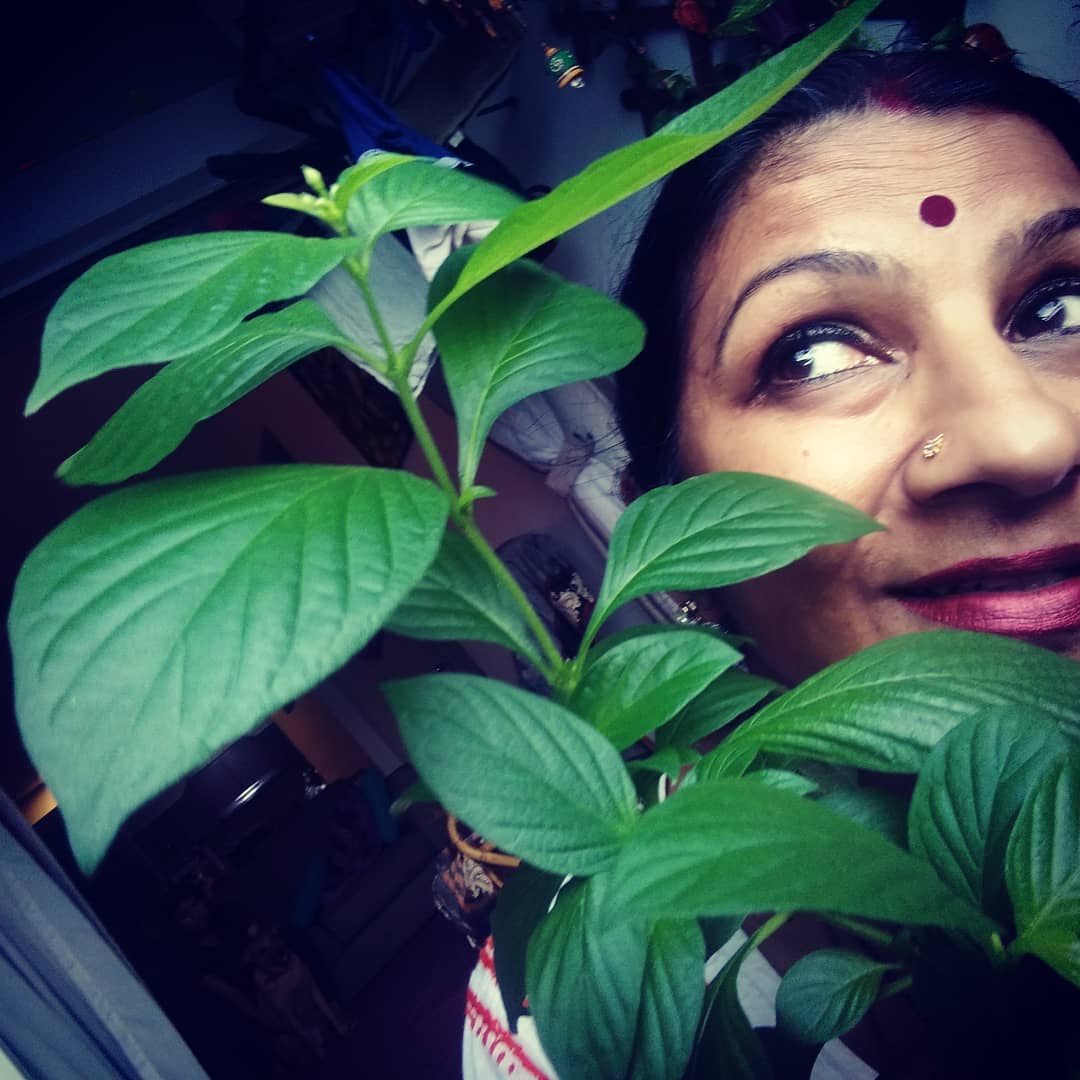
Geetha Shankaran-Lam shares snippets of what it was like growing up as a traditional dancer in Kuala Lumpur, and how the recent pandemic has made her embrace her art, family and community of dancers more than ever.
By ANN MARIE CHANDY
Well-known local dancer and dance teacher Geetha Shankaran-Lam has immersed herself in the arts and culture scene of Kuala Lumpur almost all her life.
“I was blessed to have had well-informed, lovely parents, who provided me with a conducive environment. They bought me books, records, videos, introducing me to music and dance genres which in the 1970s were ballet, Indian classical dance, Malaysian dance, instrumental music – Carnatic and Hindustani; also theatre, in particular with the Malayali cultural groups. Television was a great influence too,” she says recently in an in-depth email interview, which initially began as a catch-up during the pandemic. However, Geetha is such a fount of information that we couldn’t help but share a little about what she told us about her growing up years.
“My parents introduced temple visits so I would be aware of traditional practices. But they also took me to ticketed cultural performances in halls and auditoriums. When it was time to learn, they chose the right gurus, and I learnt classical music; I learnt to play the veena, and also bharatanatyam in home environments, not studios or halls, but at the teachers’ own homes. I had the support to fully delve in these weekly-twice activities, and as it increased more, as I knew how to balance the demands of these activities, while being active in school as well. I was involved in athletics, I played hockey, volleyball, and was chosen to be the Assistant Head Prefect in my final academic year. I was popular and got nominated as secretary in the Tamil, English, Mathematics and Interactive Clubs.”
Geetha is the fourth child in a family of five. She was born in Klang, and moved to KL in 1973.
“We saw the best of performing artists in the 1980s as the Indian associations actively organised shows. We saw many icons. Being able to watch them and greet them inspired someone like me to work harder and continue my quest to be a good dancer, singer and veena player. I was exposed to a diverse range of creative influences. All impacting my passion and joy to be an artiste with good values, principles and etiquette,” Geetha reminisces heartily.
She studied with two of the best gurus in Malaysia – Kumari Krishna Kumari and Shri Ramli Ibrahim.
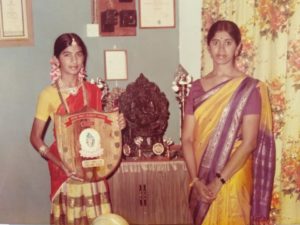
“I was one of Krishna Kumari teacher’s favourite students. I studied attentively, and most times lived with my teacher so I could train harder even during my schooling years. In her home, I was exposed to yoga, Indian dance, folk dance, Carnatic singing, nattuvangam and choreography and composition. She even provided the avenue for me to train my vocals with a master – Shri Krishna Bagawathar.”
Geetha remembers that back then one had to learn how to sing all the music for dances or music lessons. “They were part of my everyday sadhana at home during puja or after puja,” she says. “There was no recorded music or social media support then. No mobile phones to record lessons! It was all brain-work – we had to learn ways to memorise, and this became an opportunity to gain self-confidence, be attentive and build resilience. Observing and listening skills were developed this way.”
In 1986, Geetha earned the chance to do a duet with Ramli a few years after he had returned to Malaysia from Australia, and from then on became his Odissi dance partner.
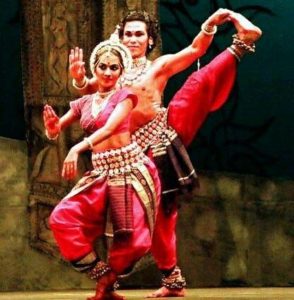
“I became a part of Sutra Dance Theatre from 1985 to 1990, and during that time had private ballet lessons with Lee Yupin, as well as contemporary dance style, especially the Martha Graham technique, which I was enamoured by. I completed my arangetram under Ramli in August 1988 and continued to undertake more tours and performing jobs spreading the work of Odissi in India, Indonesia and Japan.
“I was also a part-time intern at Sutra during my schooling days, assisting in bookkeeping, costume and wardrobe and administration, and when there were productions, I would also help with marketing and selling tickets. It was an all-round training ground.”
In 1991, Geetha got married to Lam Ghooi Ket, and they soon had a child.
“Our marriage was highlighted in the mainstream media then, to emphasize interracial marriage and the future of a ‘Bangsa Malaysia’. Soon after I was offered the position of Odissi Head of Department at The Temple of Fine Arts by founder Swami Shantanand Saraswathi. I was so pleased to have my child next to me in the next few years while I taught and spread the work of Odissi. In 2004, I was awarded the Deba Prasad Nrutya Seva for my efforts in spreading Odissi in South-East Asia. In 2020, having received the Lifetime Achievement Award from the Indian High Commissioner to Malaysia Shri Mridul Kumar, was a final encouragement for all the years of hard work, sacrifice and love for the Arts,” she shares.
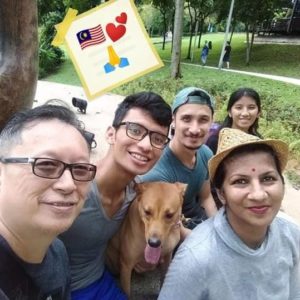
During the last one and a half years of the pandemic, Geetha and her dancing family (Hariraam, 31, Arunagiri, 21, and Sangametra,19) have been actively sharing posts as they create artistic works and events, and share their lifestyle updates too. BASKL asked Geetha to elaborate and provide some insight into these posts.
How has technology helped you during the pandemic?
During the lockdown, technology provided an outlet for online events, global chats, shows, forums and workshops, and activities to motivate our inner selves. Artistes were conversing. There were real stories out there. I joined in to occupy my time, and to gain knowledge and understanding. Human beings have a great history of migration and wherever they travelled they took along culture and their memories. So, I began sharing my photos, and this must have caught the attention of colleagues, who began inviting me to join in activities. I chose to include my children and a student in these events: there was the AIDA International Season 1 online show in June, the Aahara project on Instagram Live for Arunagiri, the Ninaad live telecast in July, the Bharati Gurugram Kalpa Utsav in August, then on the local front, 5 Choreographers in 5 Minutes, in May, the TFA’s online Guru Purnima and Navarathri events, The Vehaara Arts’ Icons in Malaysia Live show in July, besides our own GSD projects in October 2020 and then Adaptations in March 2021!
All these opportunities made us rethink our stage presentations and to instead connect with live audiences. It was a new way to present and prepare ourselves, thus creating avenues for creativity and allowing the pandemic to feed us content.
As with teaching and learning, the classes had 85% improvement in individual student’s progress. But there were hiccups too. Parents had difficulty paying fees as some had been retrenched and suffered a loss of income; there were many students who were afraid of being separated from the arts activities which they loved, and then there were space issues for everyone, as well as Internet issues to deal with!
My income was greatly affected also but I remained calm and changed my perspective. I had to encourage my students to be calm and focused as well. We began praying more together. We talked more. We laughed more. I used the sessions for therapy and gave them exercises or steps to destress. This was a crisis for us all and we all needed to adjust.
The good thing was that through online lessons, new choices presented themselves. Homework was at one’s own leisure. The teacher needed to be more creative and sensitive to her students’ needs. I found that I got the results faster than before. I liked the online communication, and when it was time to have physical classes, the students were more focused and ready to attend classes without missing any!
How did you keep up your stamina?
I visualised an “other self” – being bored, disinterested, refusing to get out of bed, gorging on food, gaining weight, feeling sick, ready to be hospitalized, and then dying of disease, sadness and depression … upon seeing that outcome, I had to come up with a Plan B: Bounce back up!
I decided to start a new exercise plan, asking my children for help, in 2020. I was in my 50s, and felt low, unable to inspire myself at that point. Knowing that during menopause there were huge changes taking place in the body of a person who had previously maintained a weight of 50-57kg for so long, I had to accept that the glorious past was over. I needed to do something for myself. I drew up small goals each day and started out simple.
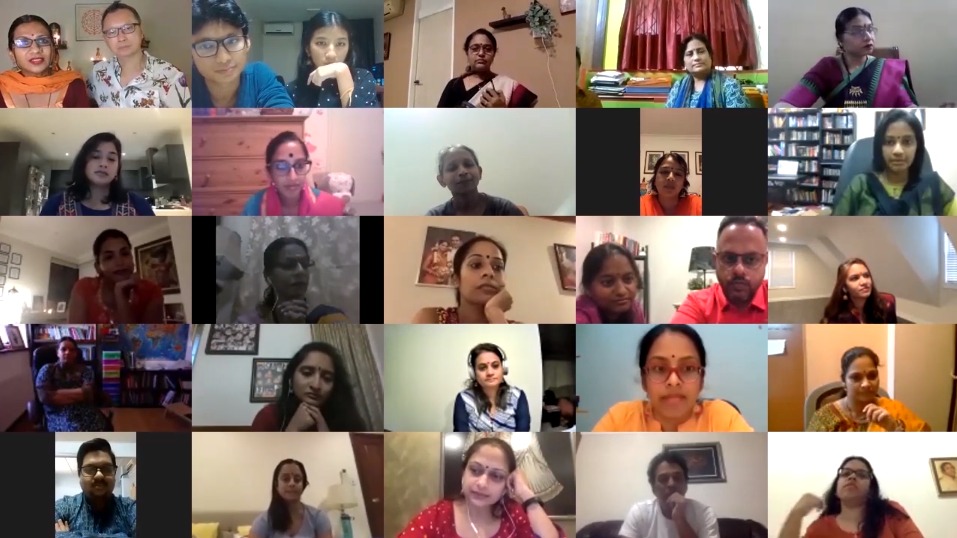
What was Our Odissi Odyssey, and how did the series come about?
Our Odissi Odyssey took place between May 9 and June 8 this year. I chose to kick start this project, inspired by 1. It’s my 30th year of being married, 2. Its 40 years of my life in the Arts, 3. It is the 10th year with Geethashankarandance (GSD) my school-company.
I wanted to find purpose in my life and to deal with the restlessness of recent times.
Through a global online interaction, and rekindling of close connections with my former students and friends, we were able to celebrate our love for dance, share emotions and experiences and find healing together.
In actual fact, I enjoy organising get togethers, reunions and parties. A sudden instinct to stay in touch with friends and colleagues who, I felt, were feeling affected by a global-crises was my motivation. “How do I contribute to world peace? How can I mobilize positivity?”
I also felt a “divine whisper” from my late mum asking me to call out to all those who have loved being in my companionship-circle and to organize a thanksgiving.
I sent out WhatsApp invites to a few ex-students/colleagues to see if they wanted to celebrate Mother’s Day with me. The formation of a small WhatsApp group slowly increased to 60 students… and it soon became a powerful team of youths, pooling their resources to help me stage this online event. It was a global family and a dream project for me!
There were guidelines. The inspiration was to look at the past and turn it into a healing momentum, by churning out memories, even if it meant spending two hours in some Zoom calls, past midnight, to listen and understand each other’s predicaments, current lifestyles and emotional states.
It was an amazing two months, and though I closed the WhatsApp Group on June 6, this has become a network for future projects that can now address topics of health and wellbeing through the arts, family and zoom conversations.
What career advice would you share with someone who wants to pursue a career in the arts?
Do your research and homework about the environment you live in and your country’s political situation. Think about economic value and your goals. Be honest and practical. Be sincere. Know who you want to follow, and chart your course. Dream how far you intend for it to grow. Study the style, the teacher or mentor. Ask questions. Have creative interactions. Work hard. Practice without expecting to arrive at a perfect result fast. Results depend on effort and emotions. Allow gradual improvement with awareness. Notate every step. Keep a journal. Be humble. Learn much, and observe the wise ones for guidance. Make mistakes. Use the values of the humble, but strong-minded, kind, forgiving, leaders who are selfless. Build a sacred space between yourself and the Teacher you choose to train with. Develop self-respect. Spend time resting and taking time to heal. Invest in wellness, rejuvenation and beauty. Build financial sustenance and plan systematically as progress requires investment. Avoid engaging in negative practices. Stay focused and workout physically. Make earning enough the outcome from your labour of diligent efforts. Love and happiness should be your everyday inspiration. Help someone who may be struggling. Develop a friendship with your teacher and colleagues. Be honest. Communicate. Study every day. Meditate. Exercise. Watch documentaries, and watch others’ life stories. Make notes. Learn to develop lightheartedness. Watch Nature. Surrender and let go. Observe and turn every action into practice. Dancing or singing or acting will become natural, and you will look forward to it, and it shall become your Happy-pill and wellness-goal. Life will have a meaningful end.
